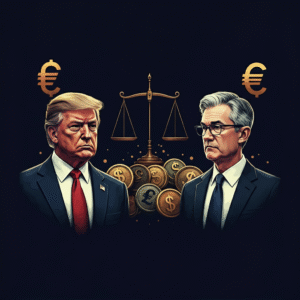Advanced Trading Techniques: Mastering the Markets
Once you’ve got a solid understanding of the basics, it’s time to level up your trading game. Advanced techniques like technical analysis, futures trading, and margin strategies can help you make more calculated decisions and boost your chances of success on Binance. These strategies require a deeper understanding of the market, but with practice, they can become key tools in your trading toolkit.
Leveraging Technical Analysis for Smarter Trades
Technical analysis is a method used by traders to evaluate and predict future price movements based on historical data and chart patterns. It’s a crucial skill for advanced traders and helps you make more informed decisions, rather than relying solely on market sentiment.
Key elements of technical analysis include:
- Chart Patterns: Recognize patterns like triangles, flags, and head-and-shoulders, which can signal future price movements.
- Indicators: Use tools like Moving Averages (MA), Relative Strength Index (RSI), and MACD to identify trends, momentum, and overbought or oversold conditions.
- Volume Analysis: High trading volume often accompanies major price moves, so monitoring volume can help confirm trends and avoid false signals.
By using these techniques, you can spot entry and exit points more effectively and reduce the likelihood of emotional trading decisions.
Pro Tip: Focus on mastering a few key indicators first, such as RSI and moving averages. Once you get the hang of these, you can expand to more complex strategies.
Using Binance Futures for Risk Management
Futures trading on Binance allows you to buy and sell crypto contracts based on the future price of a cryptocurrency. This technique offers significant profit potential, but with it comes a higher risk, especially when using leverage. Understanding how to use Binance Futures effectively for risk management is crucial to avoiding heavy losses.
Some important strategies for managing risk with futures include:
- Leverage: Futures trading allows you to trade with leverage, meaning you can control a larger position with a smaller amount of capital. While this can amplify your gains, it can also increase your losses, so use leverage carefully.
- Stop-Loss Orders: Setting a stop-loss is essential in futures trading. This automatic order will close your position if the market moves against you by a certain percentage, helping you limit your losses.
- Hedging: Hedging involves taking an opposite position to your main trade to protect yourself against potential losses. For example, if you’re long on Bitcoin, you might take a short position in Ethereum to balance your portfolio.
- Risk-to-Reward Ratio: Always aim for a favorable risk-to-reward ratio, typically 1:2 or higher. This means that your potential profit should be at least twice as large as your potential loss.
Pro Tip: Always start with lower leverage to understand how futures trading works. As you gain experience, you can increase your leverage, but never risk more than you’re willing to lose.
Strategies for Margin Trading on Binance
Margin trading is another advanced strategy available on Binance, allowing you to borrow funds to increase your position size. While this can amplify profits, it also increases the risk, so managing your margin positions is crucial.
Here are some strategies to consider:
- Initial Margin and Maintenance Margin: In margin trading, you must meet a minimum margin requirement to open and maintain positions. Make sure you understand how these work to avoid liquidation (the automatic closure of positions when your margin balance falls below the required amount).
- Using Margin to Maximize Profits: By borrowing funds, you can increase your exposure to price movements. However, make sure the potential return justifies the risk. For instance, if you borrow $500 to trade $1,000 worth of crypto, your gains or losses will be amplified by 2x.
- Liquidation Risks: If the market moves against your position and your margin balance falls below the required threshold, your position may be liquidated. To prevent this, consider using stop-limit orders or maintaining a higher margin balance.
Pro Tip: It’s essential to track your margin level closely. You can set alerts on Binance to notify you if your margin is getting too low, giving you time to adjust or exit the position.
Final Thought: Advanced trading strategies like technical analysis, futures trading, and margin trading can greatly enhance your ability to profit in the crypto market. However, these methods come with higher risks, so it’s important to practice discipline, use risk management tools, and start with small positions until you’re comfortable with each technique. By honing these strategies, you’ll be able to navigate the volatile crypto market with greater confidence and skill.
Earning Passive Income on Binance: Grow Your Portfolio Without Active Trading
In the world of crypto trading, you don’t always have to be actively buying and selling to grow your wealth. Binance offers various options for earning passive income, allowing you to earn returns on your assets without the need for constant market monitoring. Whether you’re looking to stake your coins, dive into yield farming, or use Binance Savings, there are opportunities to earn while you sleep.
Introduction to Binance Earn and Staking: Let Your Crypto Work for You
Binance Earn is a comprehensive suite of tools designed to help you earn passive income on your crypto holdings. Among its offerings, staking is one of the most popular. Staking involves locking up your cryptocurrency in a specific network to help secure and validate the network’s transactions, and in return, you earn staking rewards.
Here’s how it works:
- Staking Rewards: By staking supported coins like Ethereum 2.0, Cardano, or Polkadot, you contribute to the network and receive a share of the transaction fees as a reward.
- Flexible and Fixed Terms: Binance offers both flexible and fixed-term staking. Flexible staking allows you to withdraw your staked coins anytime, while fixed-term staking offers higher rewards in exchange for locking your assets for a set period (7, 14, 30 days, etc.).
Pro Tip: Start with flexible staking if you’re new to the concept. Once you understand how rewards work, consider locking up your coins for a fixed term to earn higher returns.
Yield Farming: A High-Risk, High-Reward Strategy
Yield farming is another popular method to earn passive income on Binance, but it comes with higher risks. Essentially, yield farming involves providing liquidity to decentralized finance (DeFi) platforms or liquidity pools in exchange for returns, typically paid out in the form of additional cryptocurrency tokens.
How it works:
- Liquidity Pools: On Binance, you can participate in liquidity pools by depositing pairs of cryptocurrencies (e.g., BTC/USDT or ETH/USDT). In return, you receive a portion of the transaction fees generated when other users trade those tokens.
- Rewarding Returns: The potential returns in yield farming are often higher compared to staking, but they can vary based on factors like market volatility and the specific pool you’re farming in. Binance even offers a feature called Liquidity Swap, which lets you provide liquidity to a pool and earn rewards based on your contribution.
- Impermanent Loss: One of the biggest risks in yield farming is impermanent loss, which occurs when the value of the assets you’ve provided as liquidity changes significantly. This can result in a lower value than if you had simply held onto the assets.
Pro Tip: Always research the pools and the coins you’re using for yield farming. Diversifying across different pools can help spread risk.
Exploring Binance Savings for Steady Earnings
Binance Savings is a low-risk, passive income option for those who want to earn interest on their idle crypto. Unlike staking or yield farming, Binance Savings allows you to earn interest on your digital assets without having to lock them in a staking contract or participate in a liquidity pool.
Here’s how it works:
- Flexible and Locked Savings: Binance offers both Flexible Savings, where you can withdraw your assets at any time, and Locked Savings, where you lock your crypto for a predetermined period (like 7, 30, or 90 days) to earn higher interest rates.
- Interest Rates: The interest you earn varies depending on the cryptocurrency you’re saving and the term. Stablecoins like USDT and BUSD generally offer higher interest rates, but some major cryptos like Bitcoin or Ethereum also provide decent returns.
The best part about Binance Savings is that it’s relatively low-risk, as you can earn a steady stream of income without the complexities of staking or yield farming.
Pro Tip: Use Flexible Savings to start earning interest while maintaining liquidity, especially if you’re unsure about locking up your funds for a longer period.
Final Thought: Earning passive income on Binance is a great way to grow your portfolio without needing to be actively involved in trading. By using tools like Binance Earn, staking, yield farming, and savings, you can make your crypto assets work for you. However, it’s important to understand the risks associated with each method, especially with more complex strategies like yield farming. Whether you choose a low-risk option like Binance Savings or dive into high-reward opportunities like yield farming, there’s something for everyone looking to maximize their passive earnings.
Maximizing Your Portfolio with Binance: Building Wealth for the Future
To succeed in the world of crypto trading, building a well-rounded and diversified portfolio is essential. Binance offers a wide range of tools and asset classes to help you maximize your returns and mitigate risks. Whether you’re new to crypto or an experienced trader, strategic portfolio management is the key to long-term success.
Building a Balanced Cryptocurrency Portfolio
A balanced portfolio is one that includes a mix of various asset types to minimize risks while maximizing potential returns. In the world of cryptocurrency, the volatility of digital assets can lead to significant price swings, which makes having a diversified portfolio more important than ever.
Here’s how you can build a solid portfolio:
- Stablecoins: Start by adding stablecoins (like USDT, BUSD) to your portfolio. These coins are pegged to real-world assets like the US Dollar and help provide stability in an otherwise volatile market.
- Large-cap Cryptos: Include blue-chip cryptocurrencies like Bitcoin (BTC) and Ethereum (ETH), which have proven to be reliable long-term investments.
- Small-cap and Niche Coins: For higher risk and higher reward, consider investing in smaller-cap cryptocurrencies or niche coins with growth potential, like Polkadot (DOT) or Chainlink (LINK).
- Non-Crypto Assets: Binance offers the opportunity to invest in stocks (via tokenized stocks) and even precious metals in some cases. These can help hedge your crypto investments.
Pro Tip: Aim for a 60-30-10 distribution: 60% in large-cap cryptos, 30% in stablecoins, and 10% in emerging altcoins or other assets.
Diversifying with Binance’s Asset Classes
Diversification is a powerful strategy to reduce risk and enhance long-term profitability. Binance offers multiple asset classes beyond traditional cryptocurrencies, allowing you to expand your portfolio into different areas.
Here’s a breakdown of Binance’s asset classes:
- Cryptocurrencies: Besides Bitcoin and Ethereum, explore altcoins that have strong use cases, like Solana (SOL) for decentralized apps or Cardano (ADA) for scalable smart contracts.
- NFTs (Non-Fungible Tokens): If you’re looking for a more speculative and trendy investment, Binance’s NFT marketplace lets you buy, sell, and hold unique digital assets. NFTs can add an element of creativity to your portfolio.
- Binance Stock Tokens: Binance allows you to invest in tokenized stock versions of popular companies, like Tesla or Apple. This enables you to benefit from stock market movements while using your crypto assets.
- Staking and DeFi: You can also diversify by staking your crypto or participating in decentralized finance (DeFi) protocols, which often offer higher returns than traditional investments.
Pro Tip: Diversify across asset classes to minimize your overall exposure to crypto volatility. Consider using DeFi platforms for higher returns, but make sure to balance it with stablecoins for safety.
Long-Term Investment Strategies on Binance
When it comes to investing for the long term, patience and consistency are key. Long-term investment strategies focus on holding assets that have strong fundamentals, avoiding quick trades, and allowing your portfolio to grow over time.
Here’s how you can approach long-term investing on Binance:
- Dollar-Cost Averaging (DCA): Instead of trying to time the market, invest a fixed amount of money at regular intervals (e.g., weekly or monthly). This reduces the impact of short-term volatility and helps you buy crypto at various price points.
- HODLing: A popular strategy in the crypto world is HODLing — holding onto your assets for the long haul, regardless of short-term price fluctuations. This strategy works well for major cryptocurrencies like Bitcoin and Ethereum.
- Focus on Strong Fundamentals: Invest in coins with solid use cases, large communities, and active development teams. Coins like Bitcoin, Ethereum, and Binance Coin (BNB) have proven themselves over time and offer a strong long-term investment case.
- Rebalancing Your Portfolio: Periodically review your portfolio to ensure it aligns with your long-term goals. If any asset is growing disproportionately, consider rebalancing by selling a portion of it and reallocating to underperforming assets.
Pro Tip: Set up recurring buys on Binance to automate your long-term investment strategy. This removes the emotional aspect and helps you stick to your investment plan.
Final Thought: Maximizing your portfolio on Binance involves strategic planning, diversification, and a long-term approach. By combining a mix of cryptocurrencies, stablecoins, and alternative assets, you can reduce risk while maximizing returns. Whether you’re new to crypto or a seasoned investor, the key is staying disciplined, doing your research, and being patient. Over time, your portfolio can grow and help you achieve your financial goals.
Risk Management and Safety Measures: Protecting Your Investments and Data ️
To succeed in crypto trading, risk management is crucial. The crypto market is volatile, and without the right safety measures in place, you can face significant losses. Thankfully, Binance provides various tools to help safeguard both your investments and personal data.
The Importance of Setting Stop-Loss Orders
Stop-loss orders are one of the simplest yet most powerful tools in risk management. They allow you to set a specific price point at which your trade will automatically close, limiting your losses if the market moves against you. This can be particularly useful in volatile markets like crypto, where prices can fluctuate dramatically in short periods.
- How It Works: When you place a stop-loss order, you decide the price level at which you’re willing to exit a position. If the market price hits that level, the stop-loss will trigger, and your trade will close automatically, preventing further losses.
- Pro Tip: Use trailing stop-losses to lock in profits as the market moves in your favor, while still limiting potential losses if the market reverses.
Protecting Your Binance Account with 2FA
Two-Factor Authentication (2FA) adds an extra layer of security to your Binance account, ensuring that only you can access it. Even if someone manages to steal your password, they won’t be able to log in without the second layer of authentication, which is usually a one-time code sent to your phone or email.
- How to Set Up: Go to your account settings on Binance and enable 2FA. You can choose between using Google Authenticator or SMS to receive the code. Make sure to keep your recovery key in a safe place.
- Pro Tip: Always use Google Authenticator instead of SMS for added security, as SMS is more vulnerable to hacking.
How to Avoid Common Trading Mistakes ❌
Even experienced traders can fall into traps that lead to avoidable losses. Being aware of common mistakes and learning how to avoid them is crucial for long-term success on Binance.
- Emotional Trading: Making decisions based on fear or greed can lead to impulse buys or sells. Stick to your trading plan and avoid reacting to short-term market fluctuations.
- Overtrading: Trading too frequently, especially in a volatile market, can lead to significant losses. Always stick to a strategy and avoid chasing every potential opportunity.
- Ignoring Fees: Trading fees can add up, especially when you’re making multiple trades. Always check the fee structure before executing a trade.
Pro Tip: Set clear trading rules for yourself and only trade when you have a well-thought-out plan.
Binance for Professionals: Advanced Tools for Experienced Traders
Binance isn’t just for beginners; it also offers a wealth of features for professional traders looking to automate their strategies and gain a competitive edge. If you’re an experienced trader, Binance’s advanced tools can help you take your trading to the next level.
Using Binance API for Automated Trading
The Binance API (Application Programming Interface) lets you automate your trading strategies, providing the ability to interact with the Binance platform programmatically. This is ideal for professional traders looking to implement custom trading bots, backtest strategies, or integrate Binance with other tools.
- How It Works: The API allows you to send commands directly to the Binance exchange, enabling automated trading based on specific market conditions or strategies.
- Pro Tip: Use the Binance API to set up automated trading strategies that execute trades based on pre-set criteria like price movements or technical indicators.
Taking Advantage of Binance’s Advanced Tools ⚙️
Binance offers a wide array of advanced tools that can give professional traders a significant edge in the market.
- Binance Futures: For those looking to trade with leverage, Binance Futures allows you to open positions larger than your account balance, magnifying potential gains (and losses).
- Binance Margin: Leverage your crypto assets to open positions that are larger than your account balance, using margin borrowing to amplify your returns.
- Pro Tip: Use technical analysis tools like Bollinger Bands, RSI, and Moving Averages on Binance’s advanced charting system to make more informed decisions.
Trading Bots: The Future of Crypto Trading
Crypto trading bots are automated software that execute trades on your behalf. These bots can work 24/7 and can follow a predefined strategy based on specific market conditions. They are perfect for traders who don’t have time to monitor the market constantly.
- How It Works: Set up your trading bot with your specific parameters, such as the coins to trade, entry/exit points, and risk management rules. The bot will execute trades according to your strategy without any human intervention.
- Pro Tip: Try Binance’s official trading bots or integrate third-party bots to automate your strategy and reduce the emotional aspect of trading.
Staying Ahead in the Crypto Market: Keep Your Edge
The crypto market is highly dynamic, and staying ahead requires continuous learning and timely actions. Binance offers several tools and resources to help you stay informed and make better trading decisions.
How to Stay Updated with Market News
Staying updated with the latest news and developments in the crypto world is essential for making informed trading decisions. Binance offers real-time news updates directly within the platform, ensuring you never miss any important events.
- Binance Academy: Learn about the latest trends and strategies from Binance’s educational platform.
- Pro Tip: Use Binance News to monitor market-moving events, and make sure to check out social media channels and crypto news sites like CoinTelegraph or The Block.
Understanding the Role of Sentiment in Trading
Market sentiment can heavily influence the price of cryptocurrencies. Understanding the overall mood of the market—whether it’s bullish, bearish, or neutral—can help you make more accurate predictions.
- How to Read Sentiment: Tools like Google Trends or Twitter sentiment analysis can give you insights into the overall mood of the market.
- Pro Tip: Pay attention to news events, whale movements, and market reactions to gauge sentiment before making major trades.
Utilizing External Crypto Analysis Tools
External crypto analysis tools can provide advanced insights that Binance’s built-in tools may not cover. Websites like TradingView or CoinMarketCap allow you to analyze price charts, track trends, and get real-time data from multiple exchanges.
- Pro Tip: Use these tools in combination with Binance’s advanced charting to get a comprehensive understanding of market conditions.
Frequently Asked Questions (FAQ): Your Trading Queries Answered
How Do I Get Started on Binance?
Creating an account on Binance is easy. Simply sign up, complete the KYC verification, deposit funds, and start trading!
How Can I Minimize My Trading Risks?
Use stop-loss orders, take profits, and portfolio diversification to manage risks effectively.
What Are the Best Strategies for New Traders?
Start by paper trading, learning basic technical analysis, and sticking to low-risk investments like Bitcoin and Ethereum.
Conclusion: Building a Strong Trading Foundation ️
Key Takeaways for New Traders
Understand the importance of risk management, learn how to use advanced tools, and practice a long-term mindset to succeed in crypto trading.
Developing a Long-Term Crypto Trading Mindset
Focus on steady growth by setting realistic goals, using a well-researched strategy, and avoiding emotional decision-making.
Exploring Future Opportunities with Binance
Binance is constantly evolving, offering new features and products. Keep exploring the platform to take advantage of the future of crypto trading!









